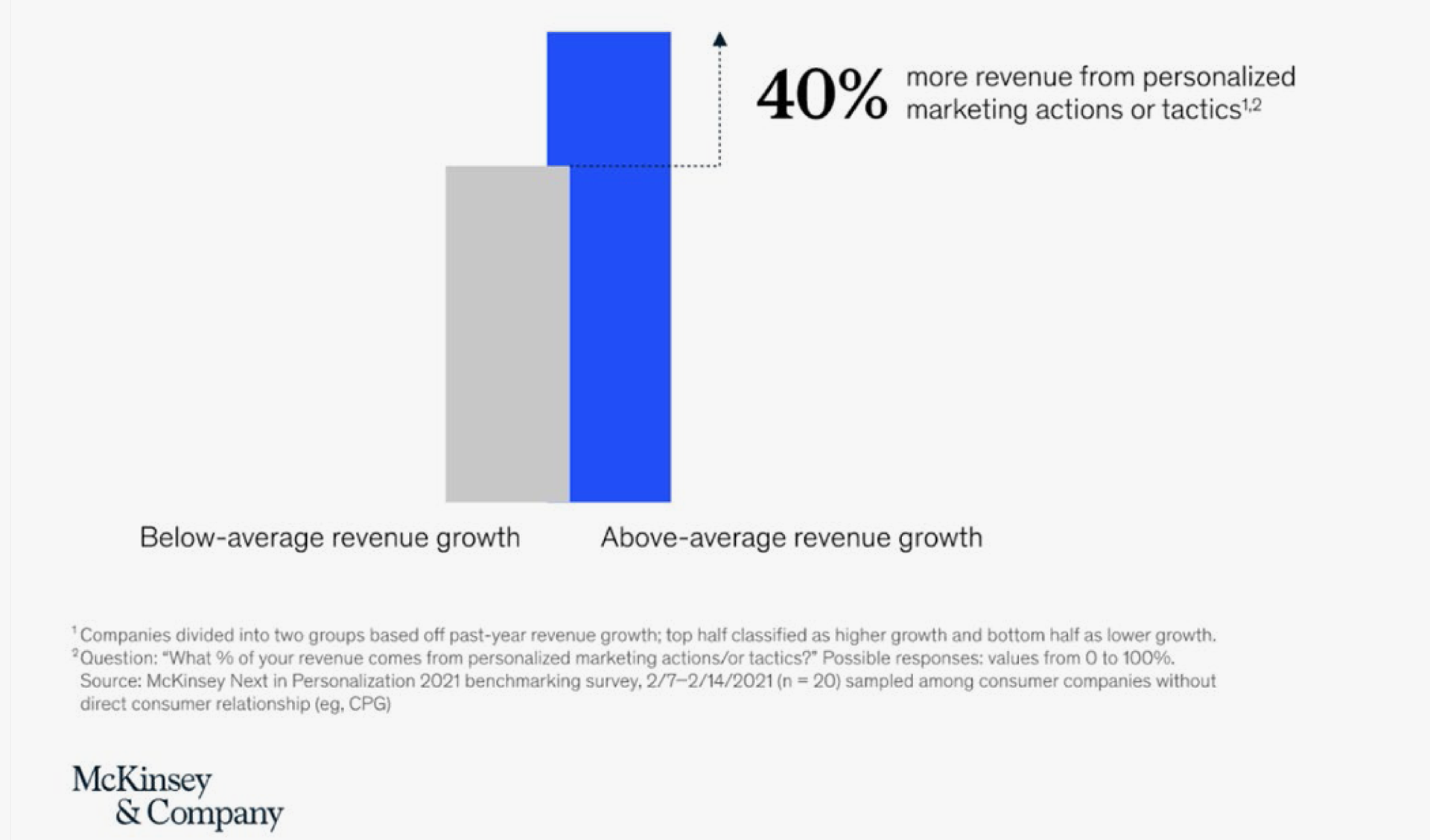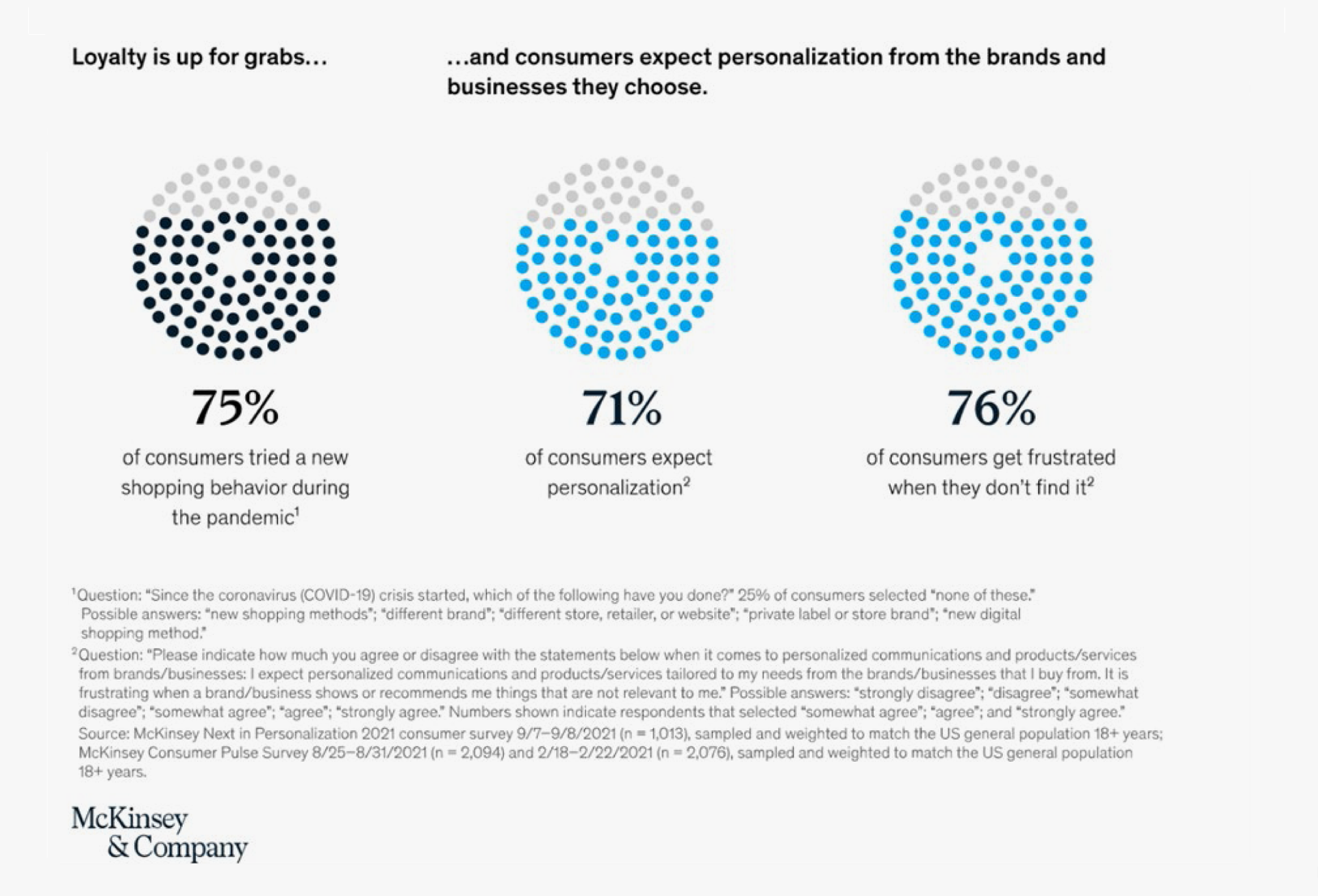¹https://www.mckinsey.com/capabilities/growth-marketing-and-sales/our-insights/the-value-of-getting-personalization-right-or-wrong-is-multiplying
How personalization makes every dollar count more
Research² shows that personalization most often drives 10 to 15 percent revenue lift. A company that continues to invest in personalization will see greater returns over time as more data is gained and more is learned about the customer and their preferences and the cycle continues.
Some interesting statistics3 have been gathered in the power of personalization when it comes to dollars spent:
- Acquiring a new customer can cost five times more than retaining an existing customer.
- Increasing customer retention by 5% can increase profits from 25-95%.
- The success rate of selling to a customer you already have is 60-70%, while the success rate of selling to a new customer is 5-20%.
Why is customer loyalty important?
In simple terms – a person who has a habit of purchasing from a specific brand will do the utmost to continue purchasing from that brand even if there is a worthy competitor.
But customer loyalty can provide so much more, including:
- Happy customer – more referrals and recommendations (especially on social media where reviews are essential).
- Returning and loyal customers make your data more accurate and give you more insights, which in turn helps your marketing efforts.
How do you build higher customer loyalty?
Personal relevance – is defined as “the perceived linkage between an individual’s needs, goals, and values and his/her product knowledge” ³.
In order to build customer loyalty, you need to create a strategy for customer loyalty and you need to be able to execute it. A good strategy helps retain customers and convert new customers into loyal ones.
- Omni Channel Marketing – make sure your customer is informed on all relevant channels for them, this can be done with various automation tools – which also help maintain a good database of returning customers and new prospects.
- Communication does not always have to be about products but also about relevant company news – are your customers looking for sustainability? Let them know you just cut down CO2 emissions by finding a new courier.
- Make your customer feel special – make the customer feel as if you know them, the more data you have the more you are able to customize your marketing efforts – big data, AI and technology have been essential in fine tuning these efforts – with great success. 71% of customers expect personalization!
- Feedback is great, but only if you act on it – if you do not respond to feedback your customers will not appreciate it, and today people give feedback everywhere from email correspondence to social media channels. Your customer does not like the fact that you left the same price on their favorite candy bar but made the candy bar smaller – listen – customers want their basket favorites to stay stable, so send that customer a coupon or discount to make sure they know they are being heard.
- Are you still relevant to your customer? As mentioned before the times are a changing – are you sustainable? Do you have good employee policies? Are you diverse? You have coupons on hamburgers? Why not also show that these apply to both beef and vegan options? Also understand that a customer who once has small children may not want to hear about diaper discounts now and is now more interested in discounts on lunch box essentials – data and personal relevance leads to loyalty.
- Data, Personalization, Data, Personalization – you need a good software tool to make sure you process all the data you have to make the most effective marketing campaigns and to maintain a great loyalty program. Our experience of over 20 years has led us to fine tune our AI powered personalization platform to make sure you get the most out of your loyalty program.
 Personalization drives performance and better customer outcomes. Companies that grow faster drive 40 percent more of their revenue from personalization than their slower-growing counterparts.¹
Personalization drives performance and better customer outcomes. Companies that grow faster drive 40 percent more of their revenue from personalization than their slower-growing counterparts.¹

